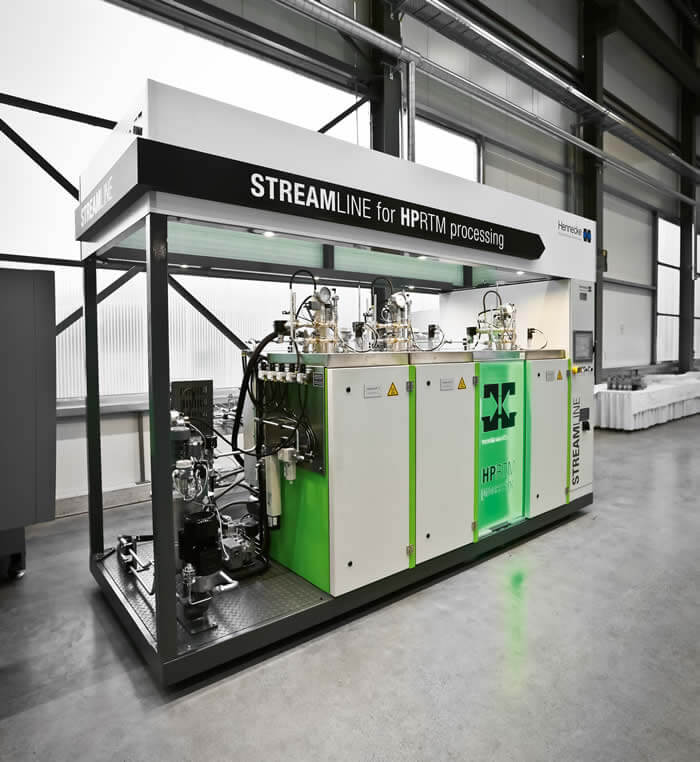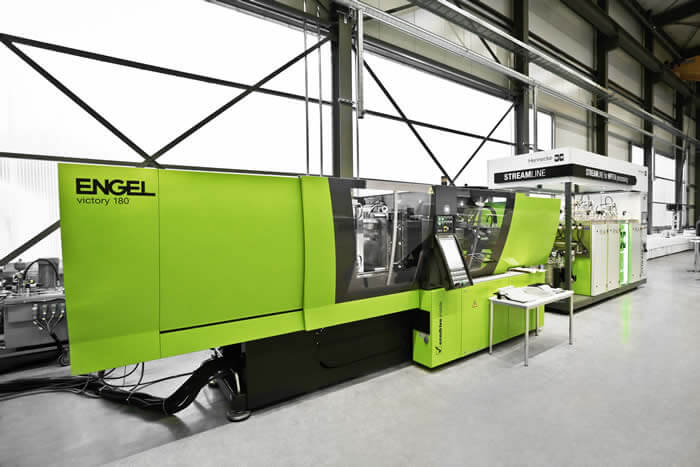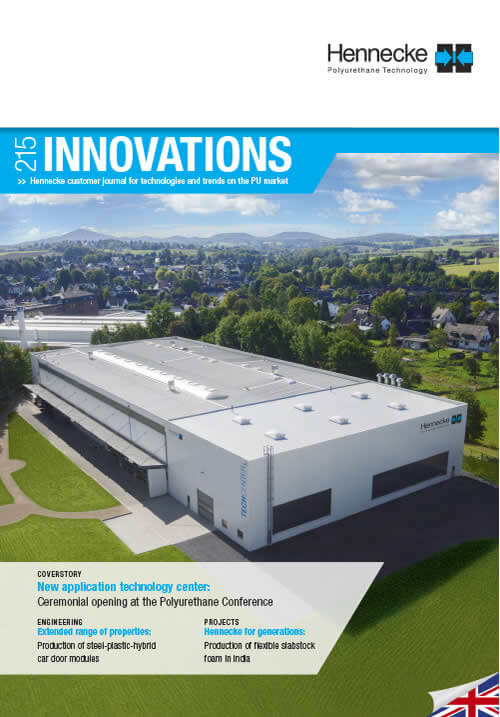Innovative lightweight construction solutions:
Hennecke presents fibre composite INSITU component
Anyone studying the subject area "lightweight vehicle construction for the future" in relation to its basic elements and prerequisites, must take the following requirements into account:
- Requirement-oriented fibre composition
- Suitability for high volumes
- Time and cost optimisation
Requirement-oriented fibre composition is a classic feature of products that are largely manually produced using the RTM (Resin Transfer Moulding) process. Here, Hennecke has already been able to significantly improve the conventional manufacturing process in terms of cycle times by developing the HP-RTM procedure using reactive plastic systems.
The injection moulding process has always been the perfect example of a system suited for high volumes in the area of plastics processing. If both processes for manufacturing fibre-composite components are applied in combination with each other, this brings significant advantages in terms of time and cost optimisation, particularly in high-volume applications. This is also because it is not always necessary to produce components in a complete fibre fabric structure.
Ideally, the fibre fabric within a component is only required in places where forces must actually be absorbed. The final moulding can then be performed completely, in a high-quality design and even in the final net shape using thermoplastic injection moulding.
The INSITU demonstration component now produced with the aid of this technology combination demonstrates exactly this kind of application. An HP-RTM process with reactive caprolactam produces the fibre composite part of the product, while the subsequent injection moulding process with polyamide determines the component's shape. "In composite products, widely varying materials are paired with one another, in order to emphasise their positive properties. Ideally, for the manufacturing process, this has to begin during machine construction," argues Jens Winiarz, Head of Sales for CSM and New Technologies at Hennecke GmbH. Producing such a component using the process described is a great step forwards into the future. To Hennecke, this represents considerable added value for its customers. This is in particular because the combination of requirement-oriented fibre composition on the one hand and cost optimisation on the other is the key to large-scale production with short cycle times in the prominent area of lightweight construction.





